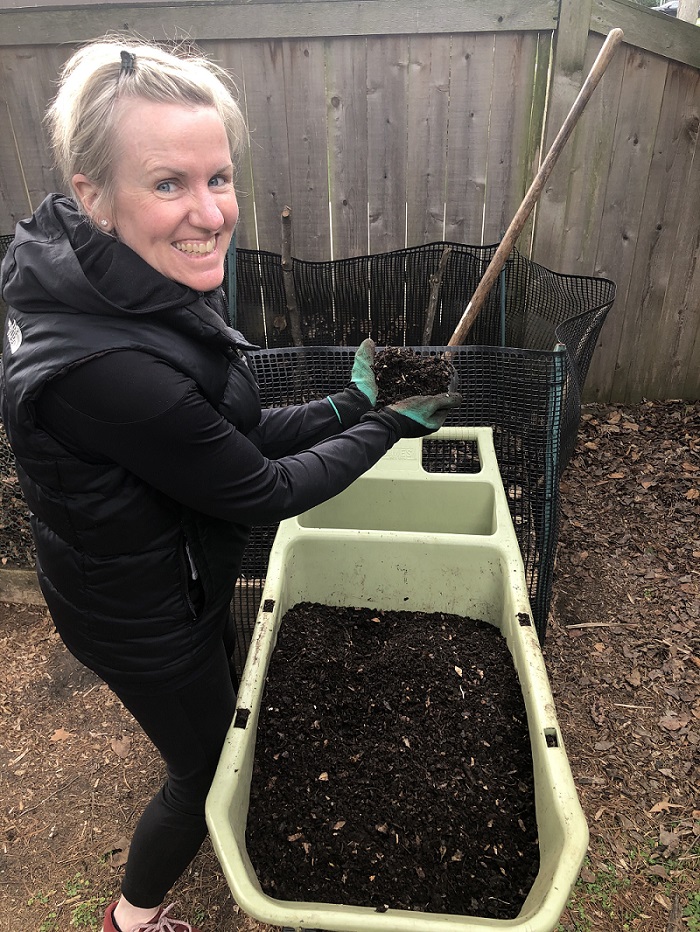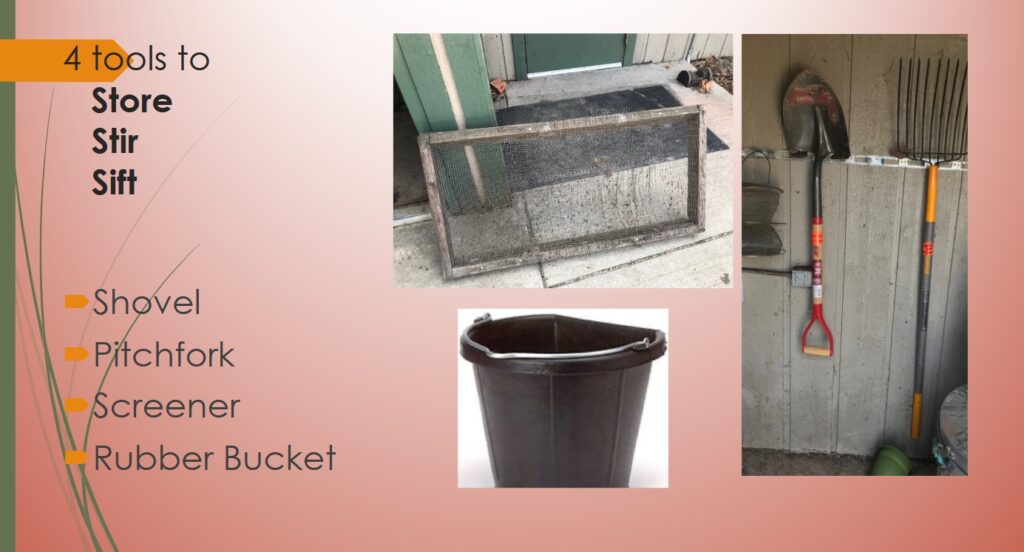Can Backyard Composting Change the World?
Podcast: Play in new window | Download (Duration: 2:01:23 — 57.4MB)
Subscribe: Apple Podcasts | Spotify | Android | iHeartRadio | Podchaser | Email | TuneIn | RSS | More
(February 6, 2022) Answer: I don’t know. But I think it can. Besides, composting is good in its own right. As the Illinois Food Scrap Coalition (IFSC) says, “Composting is nature’s way of recycling.” And you know how I feel about recycling. It’s one way of dealing with food waste, which is a chronic problem in America. In addition, it’s great for your soil and your plants. Composting helps filter water. It controls erosion. It reduces greenhouse gasses (GHG) compared to sending organic material to landfills. And on and on. In other words, backyard composting is a good way to contribute to the health of our planet.
It also contributes to your own health. In a world that seems closer to the edge each day, composting can give you a sense of purpose. And peace of mind. After two years of pandemic, that’s no small thing.
Now if we could only get more people to compost. That’s part of the purpose of today’s show. We want to show you that not only is backyard composting good, it’s not particularly difficult. I know. You’ve heard that before. But not from these guests.
Amy Bartucci was recently appointed Administrative Coordinator for the Illinois Food Scrap Coalition (IFSC). She also serves as a board member for the Illinois Stewardship Alliance. Amy is the the Founder of Go Green Park Ridge and Green Drinks Park Ridge and Director of Membership for the League of Women Voters Park Ridge.
Kate Caldwell has been composting since the 1990s. She was an Interpretative naturalist at Forest Preserve District of Will County for more than 20 years. There, she did lots of zero waste presentations focused on ecological footprint, plastic and composting. Now, she says, “I’m retired and watch out world, I’m crazy.” My kind of crazy.
Amy Bartucci’s notes on backyard composting
Both women sent me a few paragraphs about their “green philosophies.” Here’s some of what Amy wrote.

People want climate action. Diverting food scraps from landfills is a climate solution.
I’M AMIDST AN IMMERSIVE EVOLUTION: local food system efforts connecting my environmental passions (Reducing + diverting food waste is a climate solution! Composting is a top Drawdown strategy: keeps carbon in the soil, reduces ghg emissions, reduces soil erosion, provides a natural fertilizer and pest management to farming/growing)
THE BASIC NEEDS:
Space
Time + Energy
Use
Patience
Eagerness to try, get dirty, strike a good balance with nature in our yard (coexistence with our local ecosystem!)
Started with a “tumbler” but could not keep up with amount of our family food scraps. Also.. it’s plastic and we all know that’s not fantastic. One of our old ones is literally still in our yard as a twig/stick holder bc I can’t bare to send to the landfill.
Finally, she says she will tell us about her family’s “aha!” moments about backyard composting on today’s show.
Kate Caldwell’s notes on backyard composting
Composting produces CO2 (carbon dioxide)
Putting food in land fills produces CH4 (methane)
Methane is 26 -30 x more potent than carbon dioxide (meaning 26x more heat is emitted) Does composting cause climate change?
Humus, composts end product sequesters carbon for centuries or thousands of years
Increases soil productivity and allows for the formation of stable carbon that remains sequestered in the soil for 100’s and 1000’s of years. WE NEED OUR SOIL – Can soil help combat climate change?
Furthermore, she says that if you want to compost in your backyard, you should be okay with
- The “ick” factor (Micro/macro organisms that are a part of the composting process)
- Keeping your food in a bucket under the sink
- Carrying compost to a tumbler every week, chopping it up, throwing it in the tumbler, mixing with carbon and turning it on a regular basis

That doesn’t sound particularly awful to me. Just sayin’. Caldwell’s tools for composting include
- Rubber bucket
- Ice scraper or flat tipped shovel or post hole digger
- pitch fork and pointy shovel
- Carbon source (untreated wood pellets)
- insulated tumbler and/or bin system, covered compost bin, chicken wire
While there are many types of tumblers out there (best composting tumblers), Caldwell likes the Jora 9.5 cubic feet insulated tumbler, for $550. However, you can go cheaper, like the Eco74 recycled plastic compost bin (I call it the Darth Vader Helmet) at $100. Or DIY it with Chicken wire or hog fence bin for $25.
A little more…
We can’t possibly cover all there is to know about composting in this post. But you can get more information from these sites.
- Composting Resources (Illinois Extension)
- Composting for the Homeowner (Illinois Extension)
- Compost 101 (Illinois Food Scrap Coalition – be sure to scroll to the bottom of the page for more links)
- Composting at Home (IFSC)
Finally, if you don’t have a backyard, you can pay to have your food scraps hauled away. One company is Collective Resource Compost, which has been a sponsor of this show. They just became a State Certified Women Owned Business. And they reached 8,000 tons diversion since their founding in 2010. But there are others out there.
Sure, it’s the middle of winter. But this should give your backyard composting a head start for 2022.


